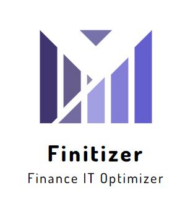FinOps Glossary
Some Common term that explain FinOps Cloud Optimization

Autoscaling
Autoscaling is a core feature in cloud computing that helps systems respond automatically to changing demands. If usage spikes—like more users on a website—it increases resources (e.g., more servers). When traffic drops, it scales down to save costs. This ensures optimal performance without over-provisioning or overspending.
In cloud computing is the automated process of increasing or decreasing resource capacity—such as compute power, storage, or memory—based on real-time workload demands. It helps maintain optimal application performance while improving cost efficiency by ensuring that only the necessary resources are used at any given time.
Allocation Metadata
Allocation metadata refers to the information used to categorize cloud costs, typically encapsulated within cloud service provider (CSP) constructs such as resource tags (AWS and Azure) or labels (GCP). This metadata can be broadly categorized into two types:
- Resource Metadata: Applied directly to individual resources (e.g., a VM or storage bucket).
- Hierarchy Metadata: Applied to higher-level constructs that group multiple resources together (e.g., accounts, subscriptions, or resource groups).
For consistency, the FOCUS project uses the term “Tag” to refer to resource-level metadata from any cloud provider or other source contributing to FOCUS data.
Examples of allocation metadata include:
- GCP: Labels, Billing Accounts
- AWS: Resource Tags, Member Accounts, Organizations
- Azure: Resource Tags, Resource Groups, Subscriptions
Benchmarking in FinOps:
Is the practice of evaluating an organization’s cloud spending and performance by comparing it to industry standards or similar companies. This comparison helps uncover areas of inefficiency or excessive costs and highlights opportunities for improvement. By understanding how their cloud usage measures up, organizations can set informed performance targets, adopt proven best practices, and make more strategic decisions. Benchmarking can also strengthen a company’s position when negotiating with cloud providers by showing how their costs align with—or differ from—market norms.
Cloud Usage Optimization
Usage optimization involves aligning the provisioned cloud resource capacity with actual usage based on business needs. It plays a key role in maximizing cloud value and driving cost efficiency.
Cloud Sustainability
Cloud sustainability is the practice of embedding environmental metrics into cloud optimization and reporting, enabling sustainability to become a factor in optimization decisions. By integrating these considerations into cost optimization, FinOps teams can help reduce the environmental footprint of cloud operations while aligning with corporate sustainability goals and achieving financial savings.
Cloud Anomalies
Cloud anomalies refer to unexpected and significant deviations in cloud usage or spending that diverge from established historical patterns. In the context of FinOps, these anomalies often signal unanticipated increases in cloud costs that exceed what would typically be expected based on past trends. Identifying and addressing these anomalies is critical for maintaining cost control, improving forecasting accuracy, and ensuring that cloud expenditures align with business expectations.
Cloud Efficiency Rate (CER)
Introduced by CloudZero in 2023, the Cloud Efficiency Rate (CER) measures how effectively a company turns its cloud spend into revenue. It’s calculated by subtracting cloud costs from revenue, dividing the result by revenue, and expressing it as a percentage. A higher CER indicates that cloud spending is being used efficiently to drive business value. Unlike traditional efficiency metrics, CER focuses solely on cloud-related costs—across both production and R&D—and excludes employee costs, offering a clearer view of true cloud return on investment. It requires detailed cost data and accurate allocation to be meaningful.
Cloud Financial Management (CFM)
Cloud Financial Management (CFM) is an early form of what is now known as FinOps. It focuses on introducing financial discipline and visibility into cloud spending. CFM brings together finance, engineering, and operations teams to collaborate on budgeting, forecasting, cost allocation, and ongoing expense monitoring. The goal is to make sure cloud resources are used efficiently and align spending decisions with business goals, without compromising on performance or innovation.
DevOps
DevOps is a set of practices that combines software development (Dev) and IT operations (Ops) to shorten the development lifecycle and deliver high-quality software faster and more reliably. It emphasizes automation, continuous integration and delivery (CI/CD), collaboration, and monitoring throughout the application lifecycle to improve deployment frequency, reduce failures, and enhance responsiveness to change.
FinOps
FinOps (short for Cloud Financial Operations) is a financial management discipline tailored for cloud computing environments. It brings together finance, engineering, and operations teams to manage cloud spending effectively. FinOps focuses on optimizing cloud usage, improving cost visibility, forecasting, and ensuring accountability across departments to maximize the business value of cloud investments.
FinOps Maturity Model
The FinOps Maturity Model is a structured framework used to evaluate and advance an organization’s financial operations in the cloud. It typically progresses through key stages—such as Inform, Optimize, and Operate—helping teams benchmark their current capabilities, identify areas for improvement, and measure progress as they evolve their FinOps practices over time.
FinOps Tools
FinOps tools are specialized platforms designed to support cloud financial management. They provide critical insights into cloud usage and costs, helping organizations track spending, detect inefficiencies, and enforce budget controls. These tools often include features like real-time monitoring, automated reporting, forecasting, and cost allocation to ensure cloud resources are used efficiently and in alignment with business goals. By enabling data-driven decisions, FinOps tools play a key role in achieving financial accountability and optimizing cloud value.
Governance
Cloud cost governance refers to the framework of policies, processes, and tools that organizations use to monitor, control, and optimize cloud spending. Its goal is to ensure that cloud investments are well-managed, transparent, and aligned with broader business objectives.
Kubernetes Engine for FinOps
Refers to the application of FinOps principles within Kubernetes environments to improve cost visibility, accountability, and efficiency. It involves tracking resource usage at the container, pod, and namespace levels, enabling teams to allocate costs accurately and identify underused or overprovisioned resources.
By integrating cost metrics into the Kubernetes ecosystem—alongside performance data—FinOps teams can optimize spend, set usage-based budgets, and drive financial accountability across engineering. This ensures that Kubernetes deployments deliver both operational agility and cost-effectiveness in the cloud.
A multi-cloud strategy:
Involves using cloud services from more than one cloud provider—such as AWS, Google Cloud, Microsoft Azure, or others—often to avoid vendor lock-in, leverage unique strengths of each provider, or improve resilience. Organizations distribute their workloads across multiple platforms based on performance, compliance, pricing, or geographic needs.
Workload
A workload typically refers to an application or software component running on a computing platform. In a traditional environment, a workload might be a web server, application server, or database server—each operating on separate hardware or virtual machines. When moved to the cloud, such as AWS, these components could run on individually configured EC2 instances tailored to their specific compute, memory, storage, and networking requirements.
From a technical standpoint, a workload represents the amount of work performed or expected within a defined period. In forecasting or cost modeling, a workload may also serve as a standardized unit—such as “1 workload = 8GB RAM + 50GB storage” or a cost-based formula like “1 workload = rate × 5 hours + cost of 3 EC2 t3.nano instances + cost of 100GB storage.” Regardless of the approach, it’s essential for organizations to clearly define what constitutes a workload to ensure consistency in planning, optimization, and reporting.
